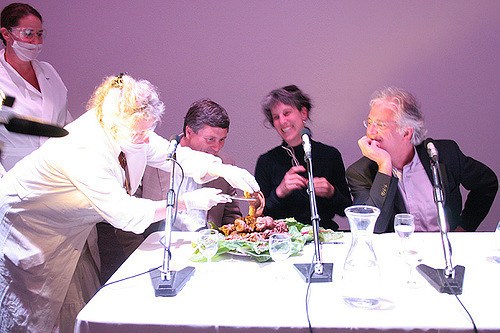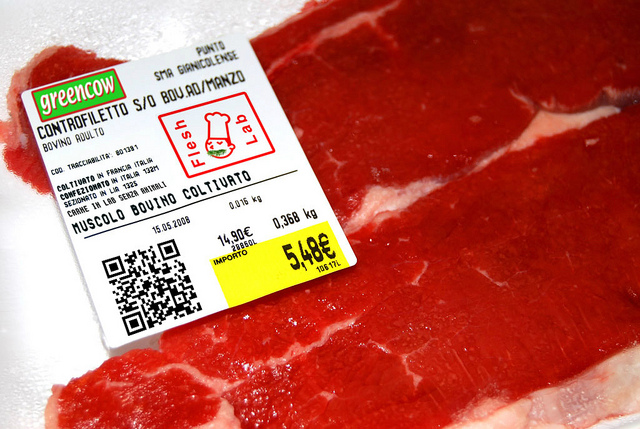Cultured Meat, Insects, And Faux Meat: A Land Use Comparison
Producing animal protein is one of the most energy intensive forms of agriculture on the planet. And it also produces a tremendous amount of greenhouse gas (GHG). Raising “livestock”—farmed animals—is responsible for 12% of global human-caused GHGs. This figure is likely to rise in the coming decades as more and more people around the world are consuming a diet rich in meat, dairy, and eggs.
Over the past 50 years, changes in the agricultural landscape have taken place. And these land use changes have largely been due to increases in livestock production. The combination of a rising number of consumers eating animal products and these land use changes means the GHG impact of agriculture is both direct and indirect. While advances in agriculture production practices and animal genetics may “increase efficiencies,” many people—including animal advocates—recognize that “demand-side measures” need to be included to meet climate targets. This is especially the case to try and reverse the GHG trends.
Addressing the aforementioned demand-side measures requires looking at protein alternatives, such as cultured meat (sometimes referred to as “lab meat” or “clean meat”), insects, and faux meats. The purpose of this study was to explore these protein alternatives from the perspective of land use. The researchers also compared the alternatives to each other. And they compared them with the land use involved in conventional animal product consumption.
Built into the study is the assumption that animal product consumption will continue to rise— inline not only with population growth, but also with rising income levels across the globe. The researchers assumed that the alternative protein sources would replace 50% of current animal products. They note that this number is arbitrary; it is meant to simply provide a reference point. Another arbitrary measure is that the scenarios of consumer waste and global adoption of average per capita diets is compared using India and the U.S. The researchers note that these scenarios were not “chosen to be equally probable or desirable.” But they enabled “a broad comparison between the impacts of potential transformations in consumer behavior.”
With these caveats in mind, the results are still a rather mixed bag. The faux meat scenario (based on the production of soybean curd) shows that more cropland would be used for soybeans compared to conventional land use. The other scenarios show “a more diverse mix of feeds.” The expansion of soy production would also have “substantial local impacts” on biodiversity and soil quality. This is due to the increased intensification in production. The researchers refer to this scenario as controversial. But they say that attempting to account for such controversy is “out of the scope” of this study.
The cultured meat scenario shows a great deal of promise, with energy use estimated to be 46% lower than in cow (“beef”) production. This number could potentially rise higher as further technology developments improve efficiency.
Finally, the results showed the insect scenario as the most efficient of the animal production systems considered, but still “less so than soybean curd.” But, the insect scenario offers an “additional advantage”—they can be fed a wide variety of food including by-products and waste. This could increase efficiency to an unknown degree. The biggest barrier to the insect scenario as a viable option is consumer attitudes. In other words, eating insects is still a dietary taboo. And so such a protein replacement scenario is, at best, optimistic.
For animal advocates, the results may not be surprising: faux meat and soybean production reduces energy use but increases land use; cultured meat represents a great energy advantage over cow production; and insect protein production is efficient but consuming insects is still a taboo. There is one interesting and potentially difficult aspect to resolve. The paper highlights chicken meat production to be over 30% more efficient than cultured meat production. The authors note that this is before we account for further technological developments in cultured meat production.
Perhaps most importantly, the researchers note that “reducing meat consumption overall is likely to have the greatest effect on the land use footprint.” They also refer to this as a potentially “extreme” shift that is unlikely to occur. For animal advocates, the results will likely encourage further support for reducing animal consumption in general. But they also show that advocating for a broad mix of protein alternatives may have the most positive impact.

















